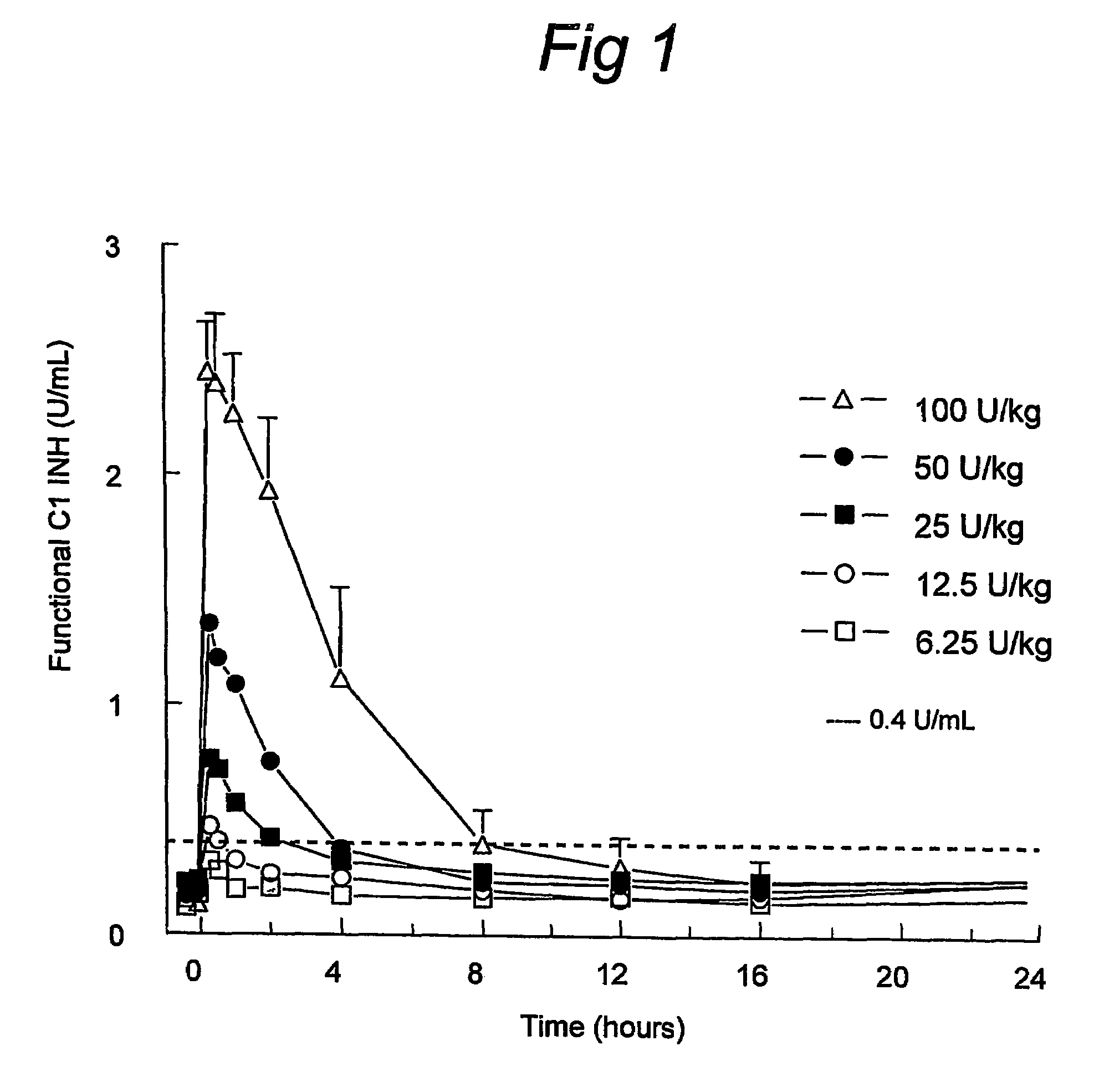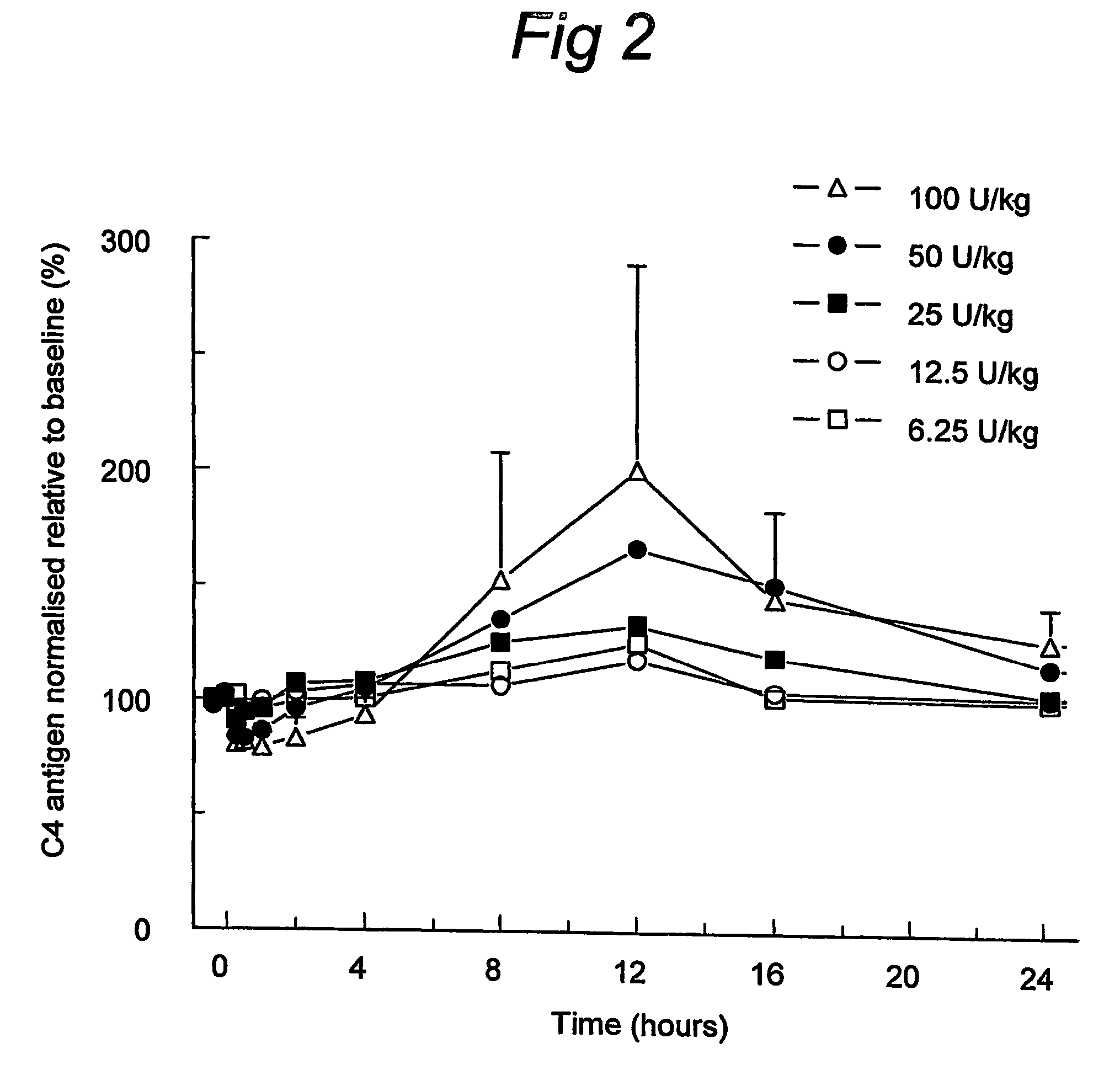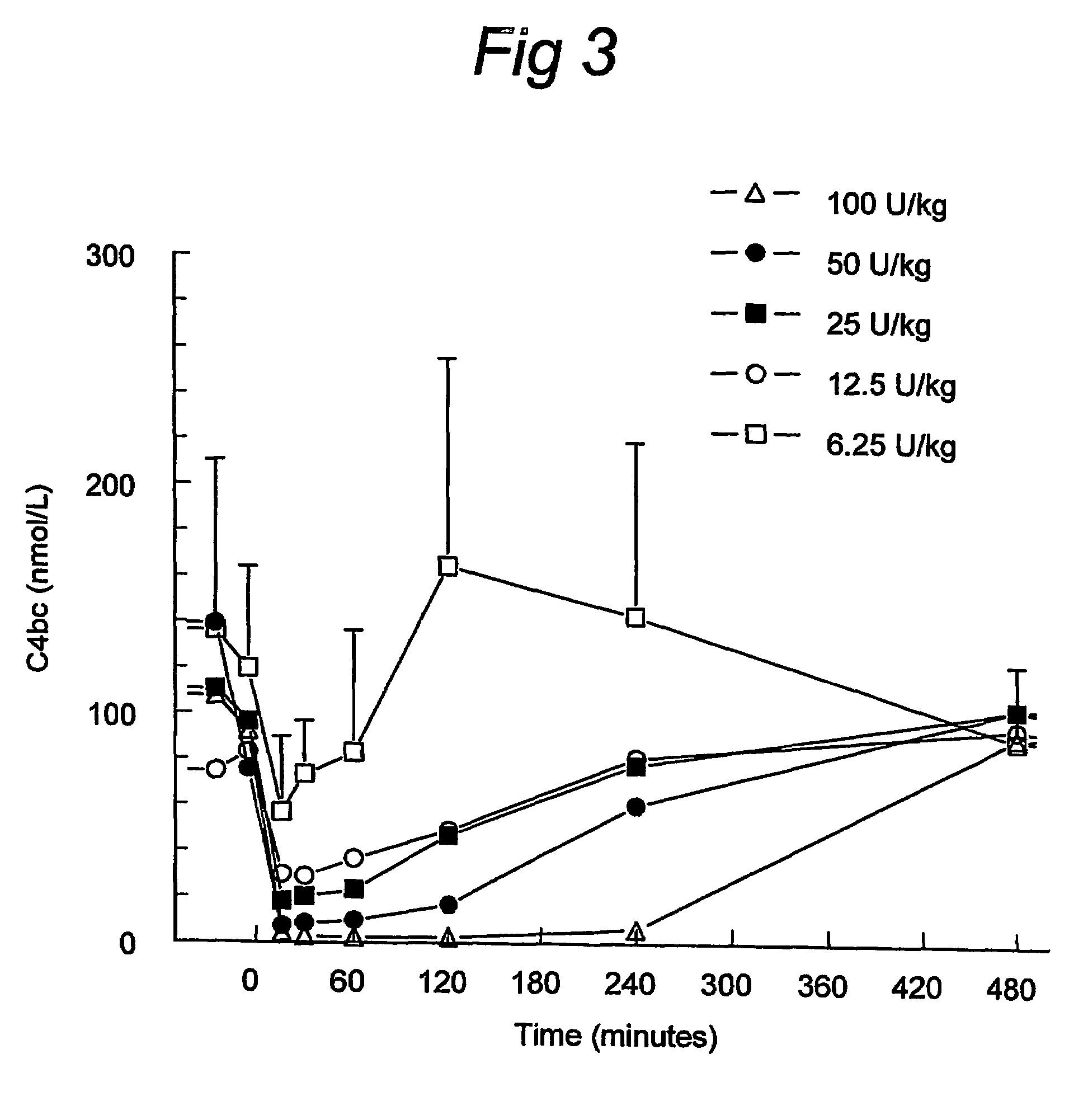C1 inhibitor with short half-life transient treatment
a technology of c1 inhibitor and short half-life, applied in the direction of digestive system, cardiovascular disorder, endocrine system disorder, etc., can solve the problems of clearly problematic administration and exert the effect of detrimental effects
- Summary
- Abstract
- Description
- Claims
- Application Information
AI Technical Summary
Benefits of technology
Problems solved by technology
Method used
Image
Examples
example 1
Administration of Recombinant Human C1INH
[0032]Twelve asymptomatic patients with HAE, with a plasma level of functional C1INH of less than 40% of normal, were included into an open label study. Patients screening occurred at approximately 30 and / or 14 days before the first study drug infusion. The patients were divided into 4 groups (A-D) of 3 patients each and each patient was infused intravenously with recombinant C1INH which was produced in and isolated from the milk of transgenic rabbits as described in WO 01 / 57079. Patients were infused on two occasions with an interval of at least five weeks between the consecutive drug administrations. The patients stayed at the study centre for 24 hours on both infusion dates. Each patient received the doses (expressed in U / kg) as mentioned in Table 1 below, through a 15 min intravenous infusion. Continuation of dosing and dose escalation was decided after each dose had been given to a group of 3 patients. If a dose was considered safe (by t...
example 2
Half-Life of Recombinant Human C1INH Isolated from the Milk of Transgenic Rabbits
[0035]The profiles of functional C1INH (FIG. 1) indicated a full initial recovery and a dose-dependent clearance of rhC1INH, which indicates a saturable mechanism of elimination. This was confirmed by analysing the rate of clearance, half-lifes and endogenous infusion rate, which is shown in Table 2. These were dependent on the dose. Application of the standard model after the infusion of rhC1INH at 100 U / kg revealed a clearance of about 13 mL / min, a half-life of about 3 h, a volume of distribution of about 3 L, and an endogenous infusion rate of about 2 U / min.
[0036]
TABLE 2Summary of model-dependent pharmacokinetic parameters(empirical Bayes estimates) of functional C1INH.Initial model without Michaelis-Menten eliminationSummary table kinetic parameters functional C1 inhibitor; initial modelParameterTreatmentNMeanSDMinMedianMaxClearance (mL / min)6.25U / kg371.3810.18761.371.0881.712.5U / kg359.5411.82052.153...
example 3
Biological Activity of Recombinant Human C1INH
[0037]Baseline C4 levels and C4 responses were highly variable between subjects of the distinct dosage groups, which underlines the need to express individual C4 responses relative to individual C4 antigen values at baseline (normalised C4 antigen). Expression of C4 antigen normalised to baseline facilitates the comparison of C4 responses both within and between dosage groups. Thus, the mean of individual baseline C4 levels is arbitrarily set at 100% and changes of C4 levels post-infusion are expressed as percentage change from baseline.
The increases in functional C1INH resulted in an initial dose-dependent decrease in mean normalised C4 (decrease of about 25% within one hour after 100 U / kg), which was followed by a dose-dependent increase in mean normalised C4 (about 200% after 100 U / kg) which response was highly variable within dosage groups. C4 peak levels occurred at about 12 hours post-infusion and thereafter gradually declined to b...
PUM
| Property | Measurement | Unit |
|---|---|---|
| volume of distribution | aaaaa | aaaaa |
| concentration | aaaaa | aaaaa |
| body weight | aaaaa | aaaaa |
Abstract
Description
Claims
Application Information
 Login to View More
Login to View More - R&D
- Intellectual Property
- Life Sciences
- Materials
- Tech Scout
- Unparalleled Data Quality
- Higher Quality Content
- 60% Fewer Hallucinations
Browse by: Latest US Patents, China's latest patents, Technical Efficacy Thesaurus, Application Domain, Technology Topic, Popular Technical Reports.
© 2025 PatSnap. All rights reserved.Legal|Privacy policy|Modern Slavery Act Transparency Statement|Sitemap|About US| Contact US: help@patsnap.com



